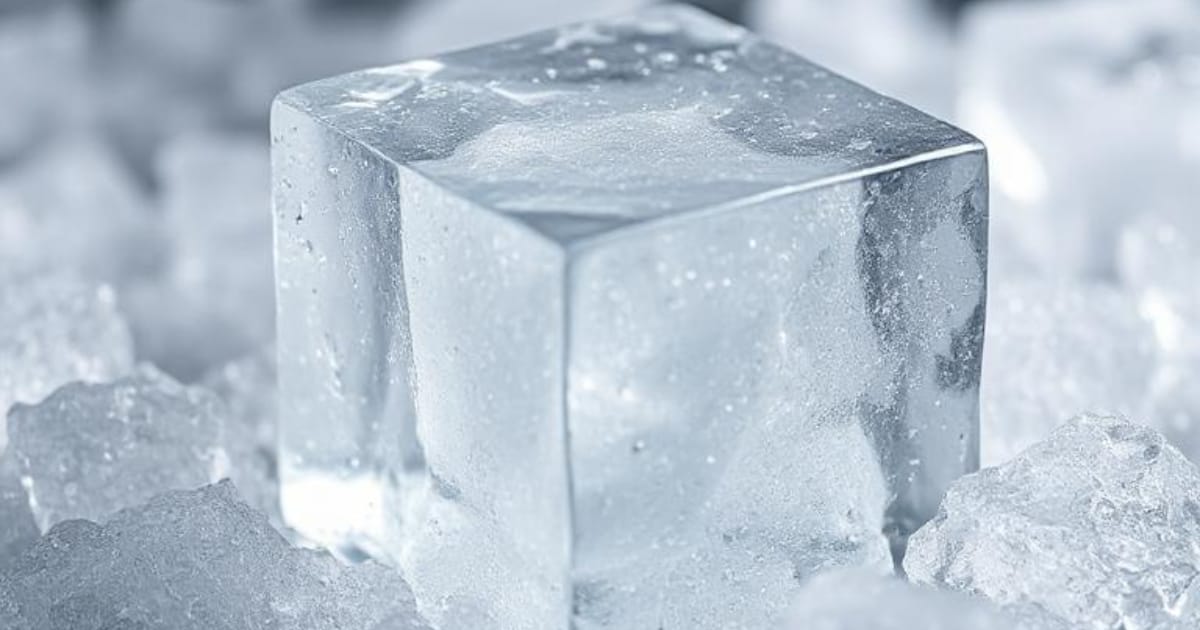Ice can reduce inflammation for the inflammatory pile of pimple types, such as cysts, nodules, pustules, and papules, and assist in skin healing.
Benefits of Ice on Acne
It Combats Inflammation:
Ice Reduces Inflammation
Constriction of Blood Vessels: When the blood vessels are constricted by ice, there is lesser blood flow to the affected area. This reduces redness and swelling.
Relieves Pain: The cold temperature numbs the skin and alleviates pain.
Ice is also effective in the reduction of the swelling itself, which means it gets an array less visible.
How Ice Assuages Pain
Numbness Caused by Ice: Due to being extremely cold, ice numbs the skin, causing immediate pain relief for the one suffering with inflammatory acne.
Reduced Swelling: Ice will reduce swelling by constricting blood vessels, offering some relief from pain and pressure.
Minimizes Redness
How Ice Reduces Redness
Minimizes Inflammation: Ice reduces blood flow to the site of inflammation, resulting in less redness and swelling.
The cooling property of ice soothes inflamed skin and reduces redness.
How to Apply Ice on Pimples- Best Ways to Do So
Wrap It:
Wrap ice freely to protect the skin. This is how to do it right:
How to Apply Ice for Acne
Choose Cheap Muslin Cloth- Use tissue paper, thin cloths, or a new handkerchief. This forms a protective layer between the eczeematous skin and ice.
Wrap the ice pack or ice cube securely in the muslin cloth after placing it inside. Make sure that ice doesn’t come into direct contact with the skin.
Apply on Skin: Gently press wrapped ice against the afflicted region for one minute at a time. Take breaks between applications to avoid damage to the skin.
Importance of Wrapping
In a way that prevents frostbite: It is possible for your skin to suffer frostbite or a burn due to direct contact with the ice.
Heat Control: The cloth makes your skin safer and more comfortable by regulating the temperature from the cold.
Cleaning Skin:
It is very important to always cleanse your skin before any kind of treatment for acne.
Here are a few good steps to remember
Select a Cleanser: With a mild non-comedogenic cleanser matched with the type of skin, you have it. Do not pick soaps that are strong; otherwise, they would leave your skin dry of its natural oil.
Use Lukewarm Water: Wash your face with warm water. Cold is less helpful in removing oil and dirt than hot water, but the latter can burn the skin.
Gently Massage: After applying the cleanser, massage your face in a circular motion for 30 to 60 seconds.
Rinse Thoroughly: Rinse your face with water thoroughly to avoid applying any residue, which may clog the pores.
Pat Dry: Take a fresh towel and pat the face dry without rubbing, as that may irritate the skin.
Why Cleanser is Important
Dirt and Oil Removal: Cleaning helps remove dirt, oil, and other impurities, which can lead to clogging of pores; in other instances, it might result in acne outbreaks.
Prepares the Skin for Treatment: In the absence of surface contaminants, treatments such as ice cannot antagonize the effectiveness.
Repeat as Needed:
If ice can be applied for a second time, this is what one may use to effectively treat the symptoms of every type of acne:
How to Reapply Ice
One More Time: Apply the wrapped ice to the area for one minute.
Be Sad for a While: Take off the ice and allow your skin to breathe for a few minutes.
Ice Again: Repeat the process for a minute if it becomes necessary. However, try not to overdo it since doing so may damage your skin.
Cautions against Reapplication
Observation of Skin: Notice how your skin responds. If there are any signs of frostbite or excessive redness, stop right away.
Limit Meetings: Apply ice a few times a day. Excessive use might damage skin or lead to inflammation.
Combine with Other Therapies: Best apposition, Compose ice along with non-comedogenic moisturizers and mild cleansers to enhance acne treatment results.
Ice Gentle Application:
It is important that the ice is applied with extreme measure-take care that it shouldn’t irritate the skin.If it irritates the skin, here is how it’s supposed to be done:
How To Apply IceWrap the ice gently: Encourage the ice that it mustn’t directly touch your skin by always wrapping it around with a paper towel or thin cloth.
Mild Pressure:When applying wrapped ice, apply it very gently. Never apply excessive pressure, as it may hurt your skin.
Short Periods: Ice should be applied for a minute, then off for a little time. Do not use it for too long, but repeat it as required.
Significance of Gentle Application
Prevention of Skin Damage: Light applications will help you greatly to prevent ice burns and frostbite.
Frisk Damage less: A little pressure will minimize extra irritation by reducing aggravated skin even more.
Limitations
For non-inflammatory acne, Ice has limited effects on whiteheads and blackheads.
Is a temporary measure: Ice is useful in lowering the symptoms but cannot be relied upon solely as a cure for acne.
Tips for Getting the Best Results
Combine treatments, using ice with non-comedogenic moisturizers and mild cleansers, for acne.
Don’t overdo it: Moderation is the key, as overuse of ice will most likely cause damage to your skin.
You may also consider natural treatments with a full-spectrum approach, from lavender oil with its soothing properties to tea tree oil with its antimicrobial qualities.
Can ice remove pimples?
Ice will provide temporary symtomatic relief for pimple treatment, reducing inflammation, soothing pain, and diminishing redness. An ice treatment will never get rid of the pimple entirely but is instead best used in a broader treatment plan for acne.
Clean the skin and wrap the ice in a cloth. Apply gently to the pimple for one minute at a time. Combined with tea tree oil and other natural remedies, it can be a more effective acne treatment.
Can ice cure acne?
Ice is a good temporary aid for pimples by providing relief from pain, inflammation, and redness. However, ice will not provide a permanent solution. It works best when combined with other treatment methods, such as topical medications, natural treatments, or an overall skincare regimen.
The effect of ice, however, is not permanent.
Ice can be quite beneficial in combination with other treatments that might produce some permanent damage, such as benzoyl peroxide and salicylic acid.
It is very important to follow a daily skincare regimen for optimal results.
Does ice help in clearing the skin?
Ice is a great standalone tool for clearing skin, helping to reduce the puffiness and irritation of the skin. This can work with a tightening sensation of the dermis and an increase in circulation, which in turn may help combat excessive oiliness.
These are only temporary fixes and not solutions to deeper issues such as acne, pigmentation disorders, or texture abnormalities.
Clear skin requires an extensive skincare regime and lifestyle modifications; ice cannot do anything on its own to solve the root issues that plague skin.
Thus, ice should be combined with a complete skincare routine to clear the skin and achieve an overall healthy state.
Is ice good for oily skin?
Ice acts as a natural remedy for oily skin, constricting pores with the result that oil production decreases.
The cold temperature tightens the pores, which helps to make them less visible and, retrospectively, lessens the chance of clogging.
Furthermore, ice lessens the frequency of breakouts and calms inflammation, which is great in controlling acne.
Does ice eliminate dark spots?
- Ice is one of the solutions to reduce dark spots on the skin. It improves blood circulation, reduces inflammation, and soothes the skin.
- Nevertheless, there is no suitable base data that suggests that ice will directly eliminate dark spots.
- Other remedies would be topical treatments like vitamin C, niacinamide, various professional treatments- such as chemical peels and laser therapy- and general natural remedies like lemon juice, aloe vera, and turmeric.
- Some of these are good aspects for better skin health, as well as to reduce the appearance.
Does putting your face in ice water help get rid of acne?
Ice water can temporarily relieve acne by minimizing swelling, tightening pores, and soothing irritated skin. However, it doesn’t completely get rid of the acne.
- The relief is temporary, though, and doesn’t address the underlying causes.
- Wash the skin and place the face under cold water for 15-20 seconds.
- Do not subject it to too long to prevent skin damage.
- You can always combine ice water with other remedies for more effective control.









